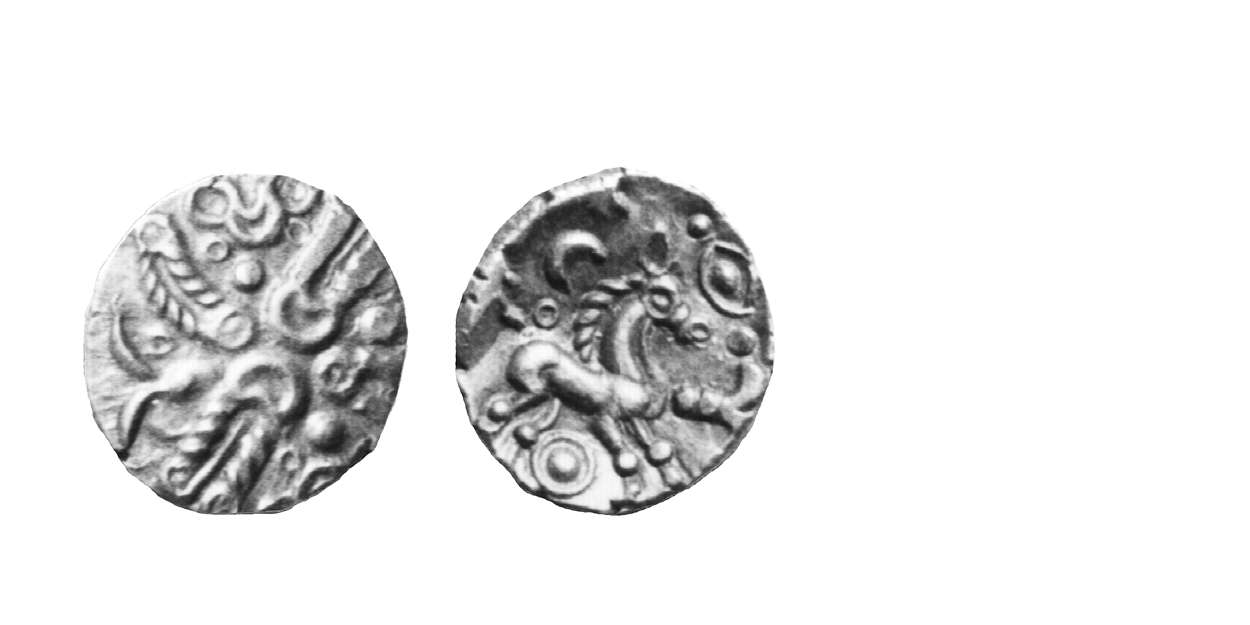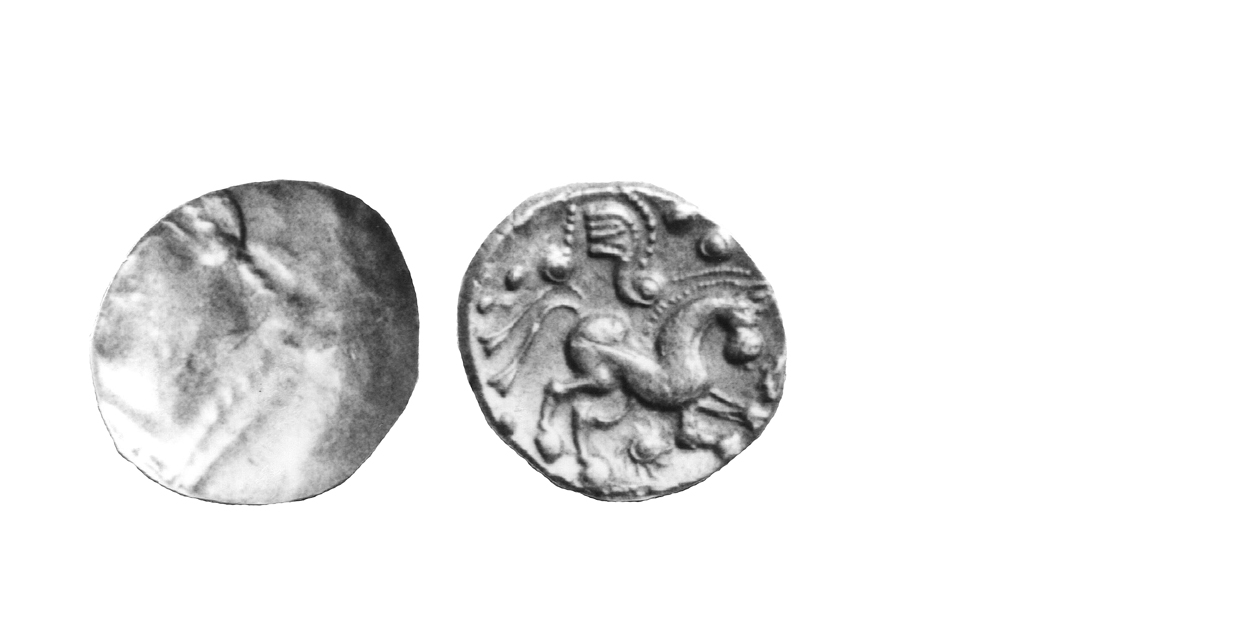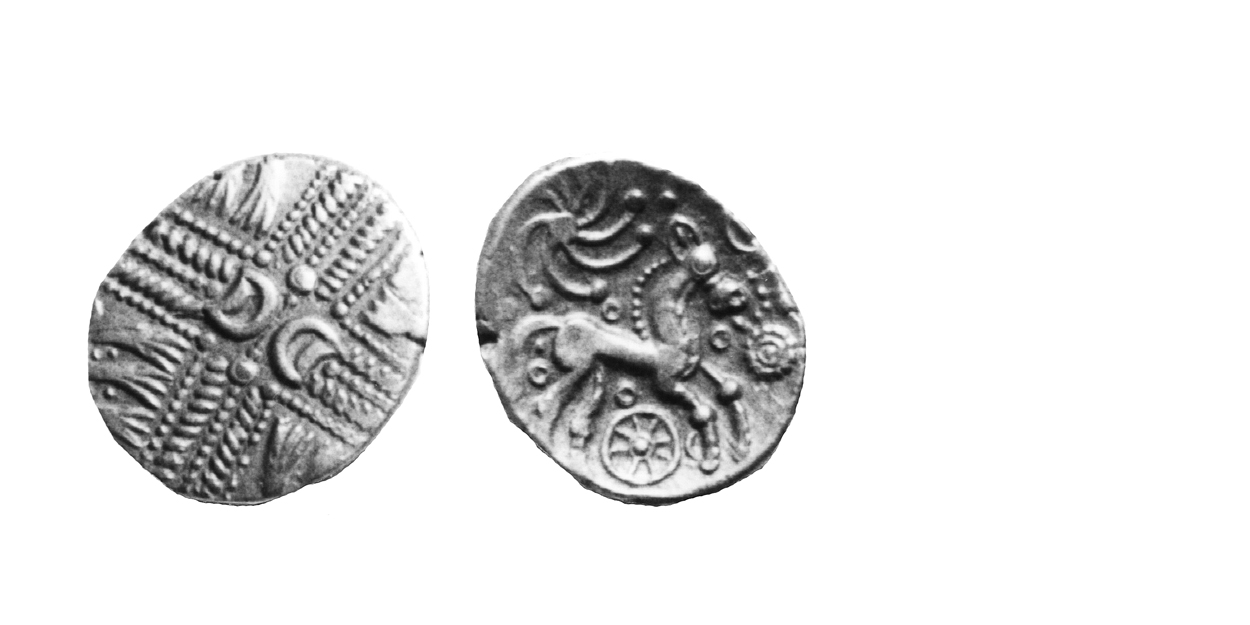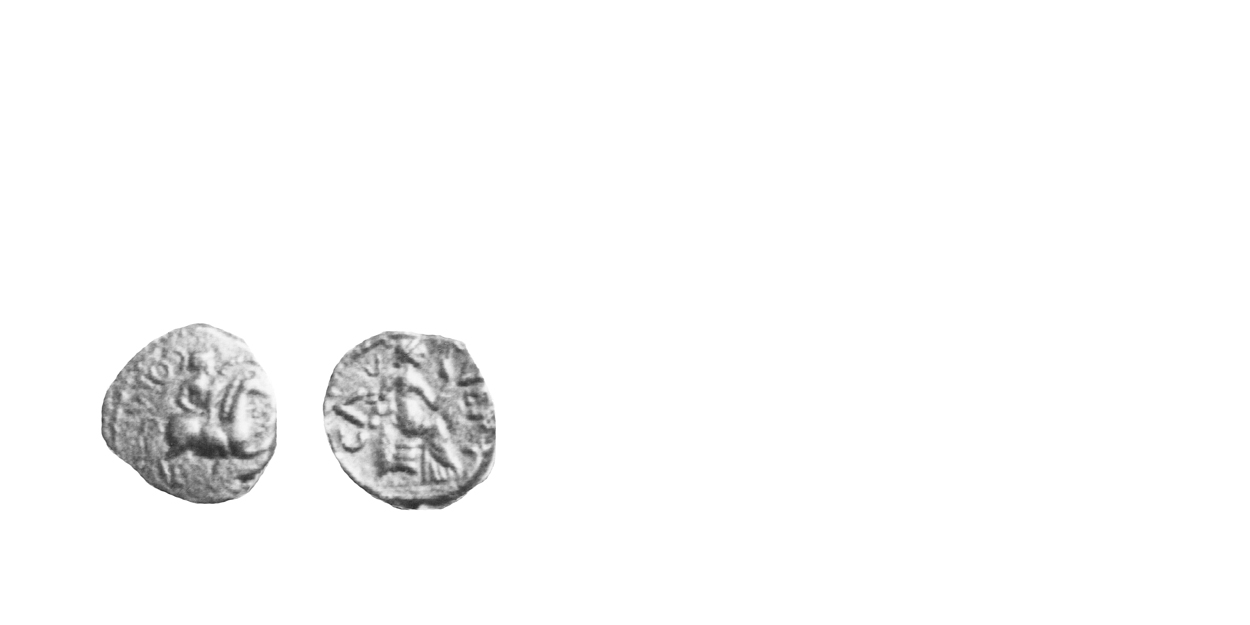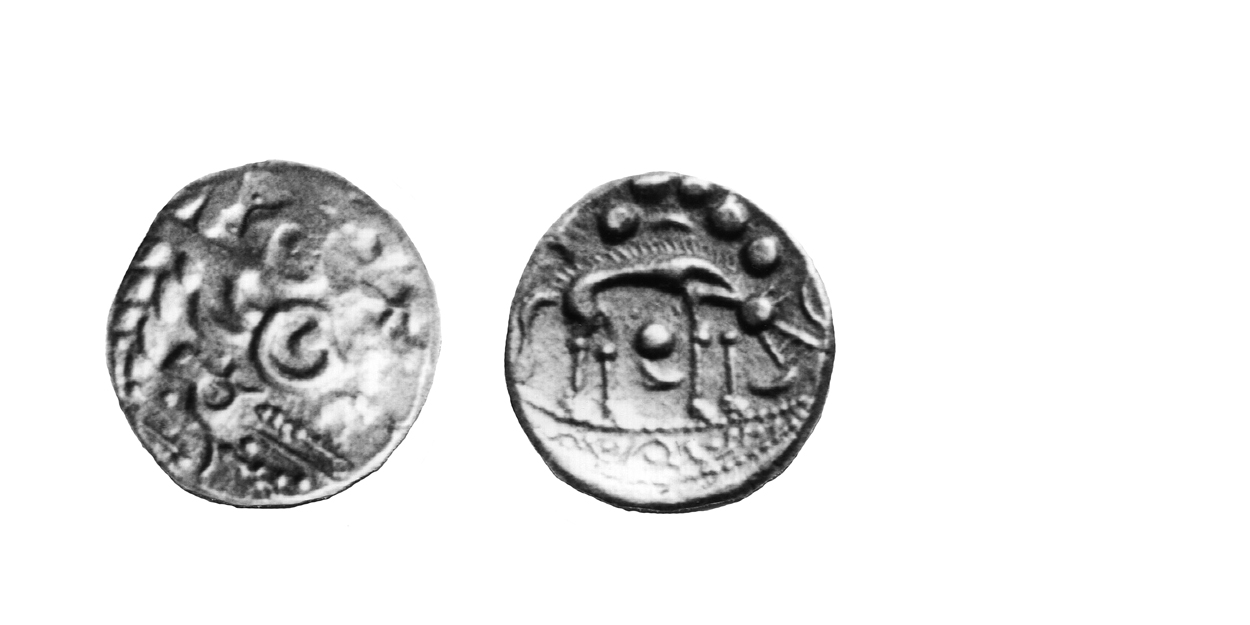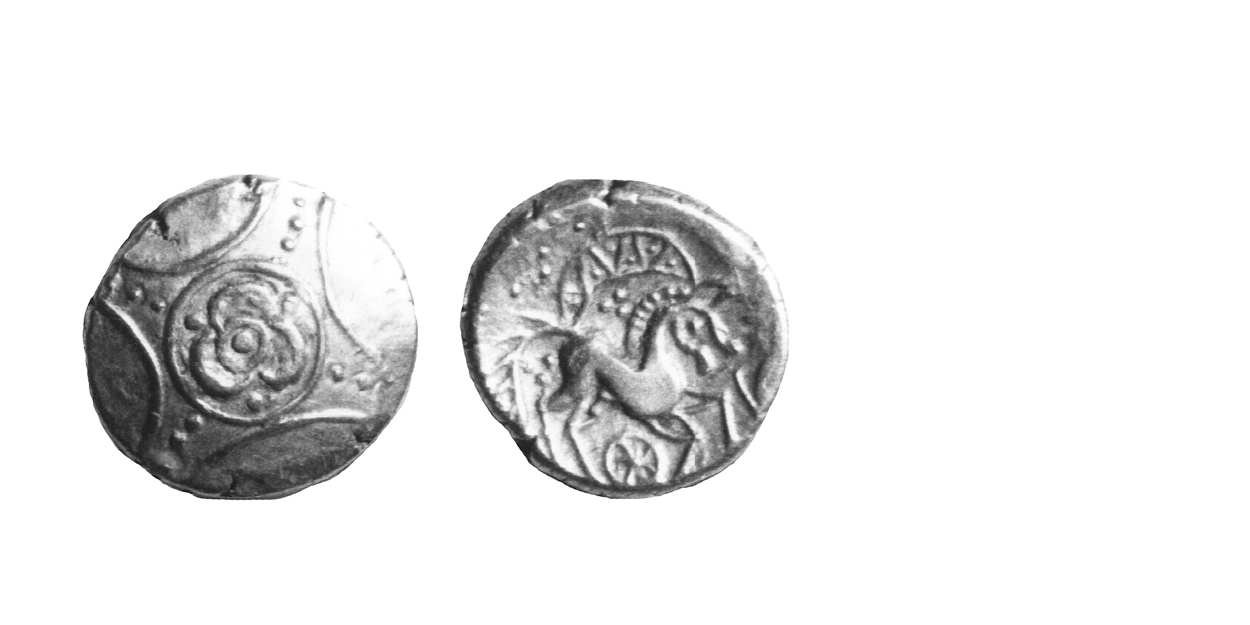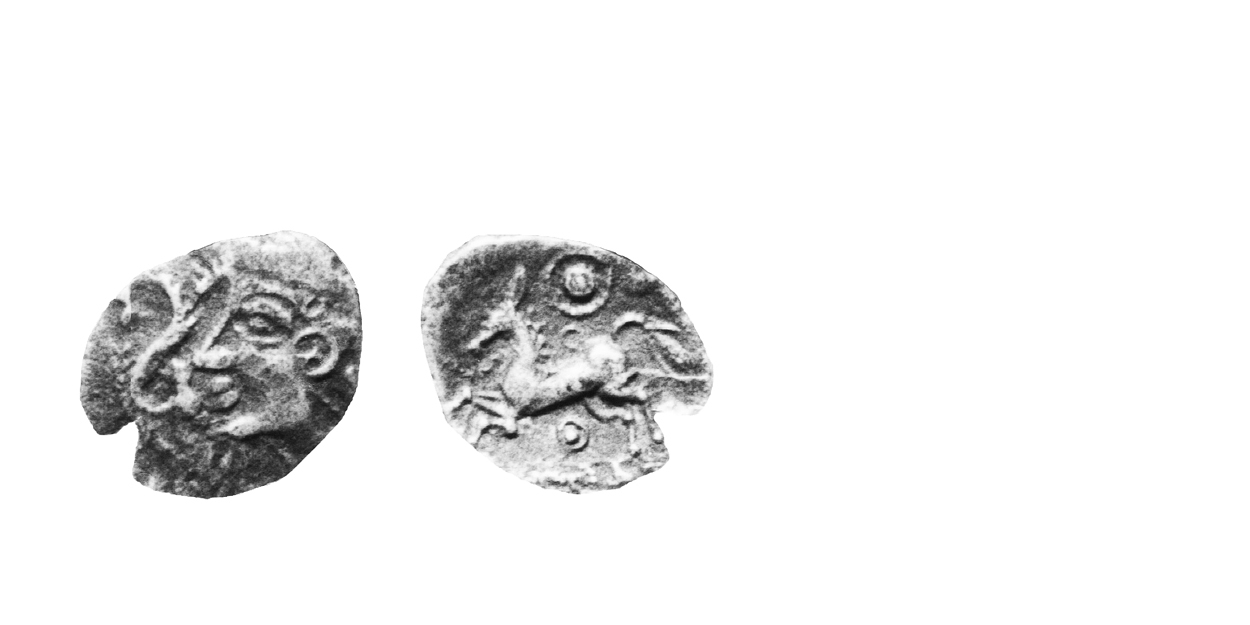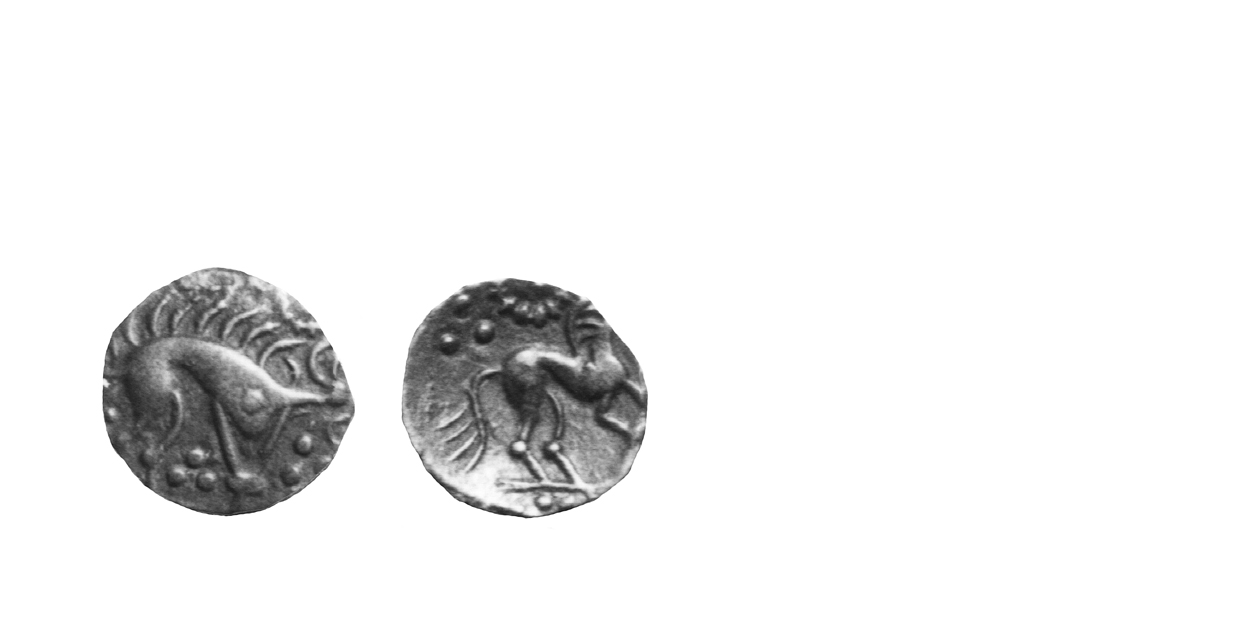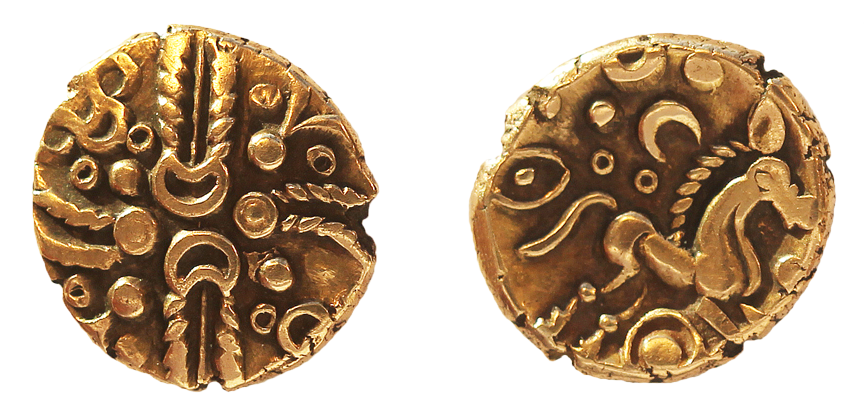
History
Last Uninscribed Coinages (Info)
Coinage in the North Thames Region 54 B.C. – 20 A.D.
In the core of the North Thames Region the Trinovantes/Catuvellauni continued the Whaddon Chase Type after the war, gradually making the design more abstract and reducing the weight slightly. An extremely rare complementary issue of quarter staters was struck for some varieties. Towards the end of the issue, about 45 B.C., two new types appeared.
The Wonersh Type and its more stylized descendant, the Savernake Forest Type, were both light-weight variants of the Whaddon Chase stater. Today, they are seldom found in Trinovantian/Catuvellaunian territory, but rather in those of the neighbouring tribes on all sides. It is possible they represented light-weight trade coins. These types, all relatively rare, were significant because they were the prototypes for the Trinovantian/Catuvellaunian dynastic issues that immediately followed. The first of these inscribed coins, first struck about 40 B.C., was that of Addedomaros, a ruler who struck coins for about ten years. These were replaced by the short-lived coinage of Dubnovellaunus-in-Essex.
About the middle of the Gallic War, the first silver coins appeared in Trinovantian/Catuvellaunian territory, the first bronzes appeared during the coinage of Addedomaros (52).
The Iceni, in the northern part of the North Thames Region, had severe coinage problems by the end of the war. The Norfolk Wolf Type had become so debased and widely counterfeited, it probably became a discredited currency. Eventually, the Norfolk Wolf Type disappeared, replaced first by the coinage of Addedomaros and later by that of Dubnovellaunus-in-Essex. Either imports of these Trinovantian/Catuvellaunian coins enabled the Iceni to suspend their own coinage or, possibly, Addedomaros suppressed the Icenian coinage.
By 15 B.C., a new Icenian coinage was introduced, with restored gold content. A new issue of staters, the Freckenham Type appeared, known today primarily from hoards. A small number of quarter staters was struck to complement the staters. After the Freckenham Type, the Iceni stopped striking gold coins, apart from two extremely rare issues of inscribed types (53).
The first Icenian silver coins, the Bury Type, began to appear after the Gallic War. Though the Iceni almost ceased issuing gold coins, the opposite was true for the silver coinage. By 15 BC., a much larger issue of silver coins, the Boar Type began – the inception of a long series of silver. They were similar to Corieltauvian issues and it is difficult to assign some varieties to one tribe or the other. Significantly, the Iceni chose not to adopt Trinovantian/Catuvellaunian designs for their first silver coinage, suggesting an early attempt to free themselves from the "North Thames socio-economic unit".
The first inscribed Icenian coins were not struck until about 20 A.D., making the Iceni the last tribe to strike coins with legends. It was not perhaps until this late date that the tribal nobility felt sufficiently free of Trinovantian/Catuvellaunian interference to strike coins carrying their own names (54).
Next Section – Last Uninscribed Coinages South Thames region

